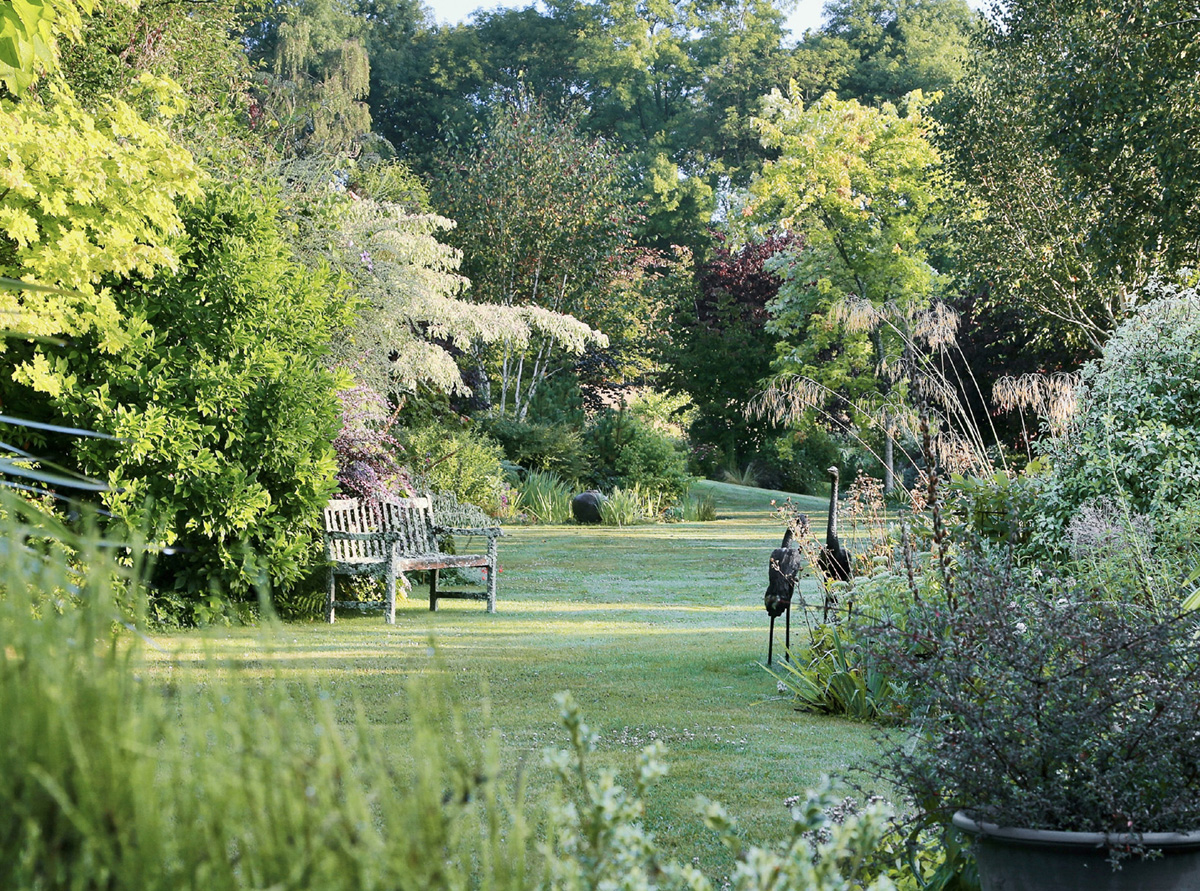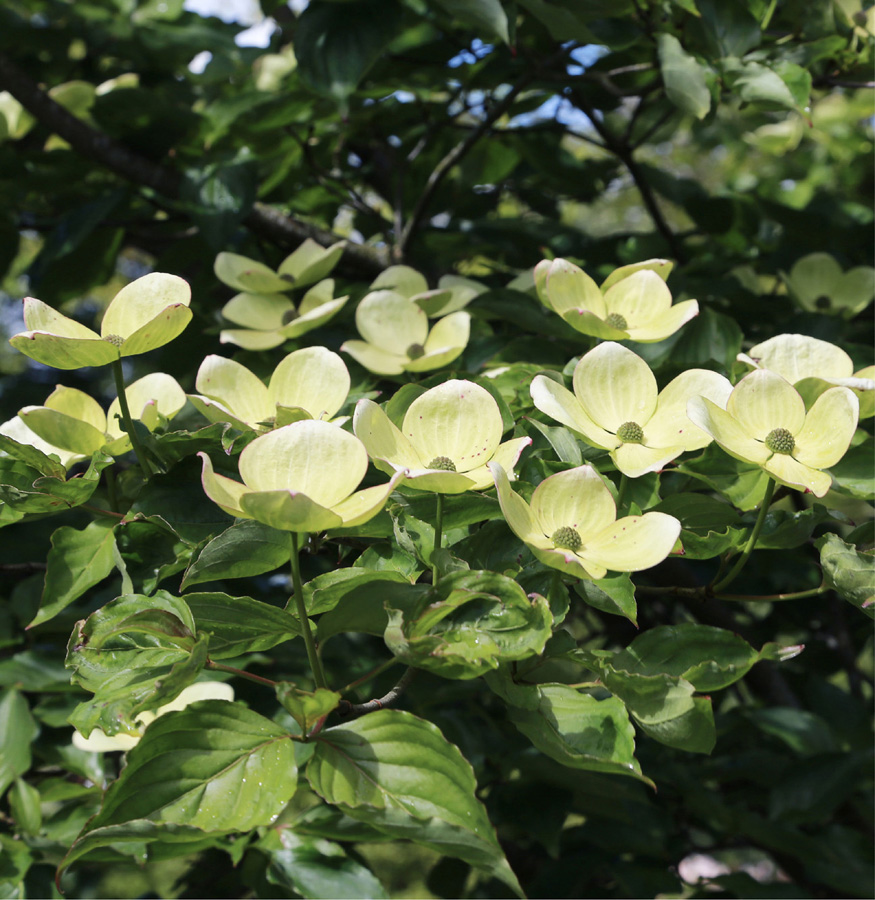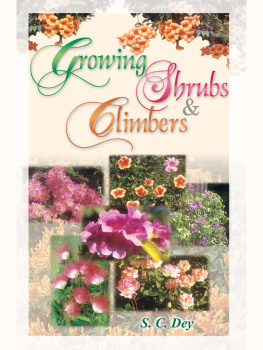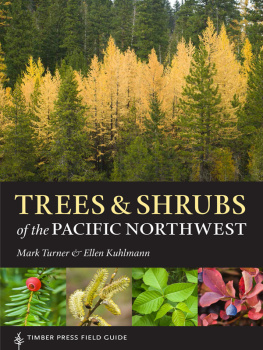
SHRUBS
Discover the Perfect
Plant for Every Place
in Your Garden
ANDY McINDOE
Timber Press
Portland, Oregon
Contents

Our garden at Sandhill Farm, Hampshire, UK, contains a variety of shrubs and trees planted for year-round interest.
About This Book
Compiling this book has been interesting, rewarding, and often challenging. The obvious garden situations are the easiest to make recommendations for. Shade, sun, and acid soil are just some that are constantly asked about. Those of us who advise on gardens have our favourites for such conditions, and these are the first plants that spring to mind. However, I have tried to include as extensive a palette of shrubs as possible and avoid duplications, but it is surprising how the obvious contenders for one situation are the forerunners for the next. Thinking of alternatives is where the challenge begins.
I have tried to be definite in my recommendations. It would be easy to say any potentilla will do, but that leads to the question of which one. Ive included my first choices in the shrub entries, and the reader can then choose alternatives. For example, I may recommend Potentilla fruticosa Abbotswood in one situation and Potentilla fruticosa Primrose Beauty in another. Unless I say otherwise, the two are really interchangeable. I have included them because they are both good plants.
I advise you to use my selections as a guide, but see what is available locally or from your usual source of plant material. Selections vary with nursery and country. If you can choose the plants personally, so much the better. It is preferable to have a good plant of a close substitute than a poor plant of your first choice. Many planting schemes are ruined by the inflexibility of the designer.
In most cases choosing the shrubs for each situation was easy and the selection could have been far more extensive; in other instances it was challenging. Some will undoubtedly question why I have not included shrubs that seem obvious choices to them. We all use a group of plants that are familiar to us, and I always recommend plants that I have some experience of. Also it is important to remember that all plants behave differently in different gardens. For example, I never recommend sarcococcas for pots and containers because I never have success with them. However I have met several gardeners who claim to have wonderful specimens that have thrived in pots for years. Similarly I usually find that Daphne odora has a lifespan of ten to fifteen years. Yet I have met gardeners who claim that theirs has been with them for more than thirty. Two things are certain: we all lose track of time and plants have not read the rule book.
The shrub descriptions include an indication of potential size. It will certainly depend on the growing conditions, and it can depend on the original specimen you plant, its condition, and possibly the clonal selection. Some cultivars vary considerably according to the clone being propagated and even where the cutting material is taken from on the parent plant. Some shrubs are multiplied by micropropagation and the offspring can appear slightly different from the parent even if they are genetically identical. Take a look at a batch of Pittosporum Garnettii on a nursery bed and you will probably see variation in leaf size, shape, and growth habit, even though they are all true to type.
The subject of hardiness is perhaps the most difficult to be specific about. For gardeners in the UK, the Royal Horticultural Societys hardiness ratings are a relatively recent introduction. They are perhaps more useful in the colder areas; those of us gardening in the warmer south pay little heed to them. Also we are an island and the warming effect of the sea is profound, even in the Far North. However, we get caught out by an unusually cold winter every few years.
In North America zonal information is far more relevant. I have consulted as many sources as possible before stating these and they are an average, in some cases of widely varied opinions. This is not surprising as the microclimates in gardens vary so much. Urban areas are usually warmer. The presence of walls and buildings may mean more tender subjects survive. Exposure to cold winds or drainage of cold air down a slope can mean failure of a plant which should survive in that zone.
At the end of the day it is up to the gardener to determine the risk he or she wishes to take. We all like to push the boundaries; that is part of the fun of gardening.
I hope you find this book a useful companion when selecting shrubs. I also hope you find it inspirational and that it helps you to extend the palette of plants you use. If I may I would like to suggest keeping the following in mind:
Never reject those hardy familiar shrubs that are widely used: they are a great foundation and support for the desirable treasures which may or may not succeed.
Always consider foliage first and flowers second. Leaves last for longer and are the fabric of a planting scheme; flowers are fragile embroidery.
Always buy good-quality shrubs, plant them well, and look after them; they will reward year after year.
If a shrub fails to perform, does not please, or declines, remove it and plant something else. A space in a bed or border is a wonderful planting opportunity.
Happy gardening.
Hardiness ratings
Knowing a plants hardiness rating will help you to determine whether it will survive in your climate.
For the UK the RHS has devised a system of hardiness (H) ratings for garden plants based on temperature ranges. Download the table here: rhs.org.uk/plants/pdfs/2012_rhs-hardiness-rating.pdf.
USDA hardiness zones are based on average annual minimum temperatures. The lower the zone number, the colder the winter temperatures. To see temperature equivalents and to learn in which zone you garden, see the U.S. Department of Agriculture Hardiness Zone Map at planthardiness.ars.usda.gov/PHZMWeb/.
For Canada, go to planthardiness.gc.ca/.
For Europe, go to uk.gardenweb.com/forums/zones/hze.html.

The fabulous Venus dogwood, a flowering specimen with exceptionally large bracts, rarely shows its potential in the garden centre or nursery, is slow to produce, and therefore is also more expensive to buy. However, when established in the garden it proves its worth.
A Few Good Reasons to Plant Your Garden with Shrubs
Shrub is a familiar word in the world of plants and gardening, but one that means different things to different people.
To the botanist it means a plant with several woody stems growing from ground level. These stems are permanent structures that do not die back to ground level in winter. They usually branch, they can be evergreen or deciduous, and they have the ability to grow longer with each growing season. A shrub has the ability to last from year to year; it does not just grow from a seed, then flower, produce its own seeds, and die in just a year like an annual. It does not produce an underground food- and water-storage structure like a flower bulb or rhizome, which enables it to survive a dormant season when flowers and leaves wither and die. A shrub has a magical ingredient in its stems, a reinforcement called lignin, a substance that makes those stems permanent and built to last.
Next page








